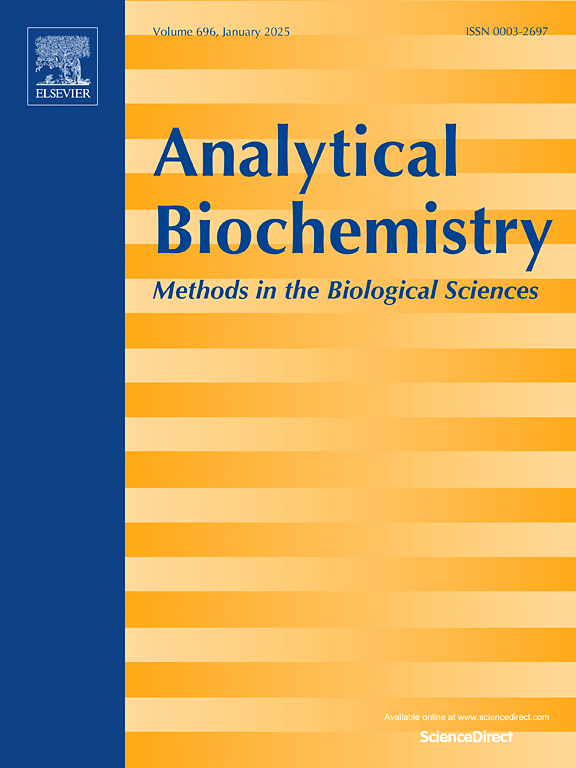The application of different biotechnologies in detecting the changes in MAM and their classic discoveries
IF 2.6
4区 生物学
Q2 BIOCHEMICAL RESEARCH METHODS
引用次数: 0
Abstract
Mitochondria-associated membrane (MAM) has been studied as a novel target for explaining the mechanisms underlying the changes in cellular function and the process of multiple diseases. This structure is a complex of proteins, it tethers mitochondria to the endoplasmic/sarcoplasmic reticulum (ER/SR) and mediates the crosstalk of ions, lipids and metabolites between the two organelles. Different component proteins play distinctive ways in influencing the structure of MAM or the cellular signal transduction. Mitochondria and ER are the hubs of cellular bioenergetics and protein homeostasis respectively, MAM was supposed to play both physiological and pathological roles in regulating the function of either the two organelles and cells. The mitochondria-associated membrane is a highly dynamic structure and could be disrupted or remodelled within several minutes. Up to now, not all component proteins of the MAM complex have been revealed. Several biochemical and imaging approaches have been used to measure the changes in the structure or the number of MAMs, but they come with their issues. For distinct research aims, particular techniques were used based on their applicabilities, the research platforms and technical defects. This review briefly summarized the current biotechnologies for detecting MAM, and analyzed their limitations, aiming to assist further research in selecting appropriate methods based on actual situations.

不同生物技术在检测MAM变化中的应用及其经典发现。
线粒体相关膜(mitochondrial -associated membrane, MAM)已被研究作为解释细胞功能变化和多种疾病过程的新靶点。这种结构是一种蛋白质复合物,它将线粒体连接到内质/肌浆网(ER/SR),并介导两个细胞器之间的离子、脂质和代谢物的串扰。不同组分蛋白对MAM的结构或细胞信号转导有不同的影响。线粒体和内质网分别是细胞生物能量和蛋白质稳态的中枢,MAM被认为在调节这两种细胞器和细胞的功能方面具有生理和病理双重作用。线粒体相关膜是一种高度动态的结构,可以在几分钟内被破坏或重塑。到目前为止,还没有发现MAM复合物的所有组成蛋白。一些生化和成像方法已经被用来测量mam结构或数量的变化,但它们也有自己的问题。针对不同的研究目的,根据其适用性、研究平台和技术缺陷,采用了不同的技术。本文简要总结了目前检测MAM的生物技术,并分析了其局限性,旨在帮助进一步研究人员根据实际情况选择合适的方法。
本文章由计算机程序翻译,如有差异,请以英文原文为准。
求助全文
约1分钟内获得全文
求助全文
来源期刊

Analytical biochemistry
生物-分析化学
CiteScore
5.70
自引率
0.00%
发文量
283
审稿时长
44 days
期刊介绍:
The journal''s title Analytical Biochemistry: Methods in the Biological Sciences declares its broad scope: methods for the basic biological sciences that include biochemistry, molecular genetics, cell biology, proteomics, immunology, bioinformatics and wherever the frontiers of research take the field.
The emphasis is on methods from the strictly analytical to the more preparative that would include novel approaches to protein purification as well as improvements in cell and organ culture. The actual techniques are equally inclusive ranging from aptamers to zymology.
The journal has been particularly active in:
-Analytical techniques for biological molecules-
Aptamer selection and utilization-
Biosensors-
Chromatography-
Cloning, sequencing and mutagenesis-
Electrochemical methods-
Electrophoresis-
Enzyme characterization methods-
Immunological approaches-
Mass spectrometry of proteins and nucleic acids-
Metabolomics-
Nano level techniques-
Optical spectroscopy in all its forms.
The journal is reluctant to include most drug and strictly clinical studies as there are more suitable publication platforms for these types of papers.
 求助内容:
求助内容: 应助结果提醒方式:
应助结果提醒方式:


